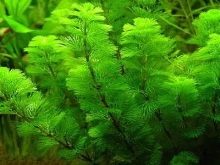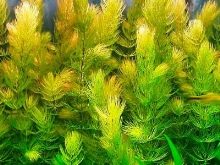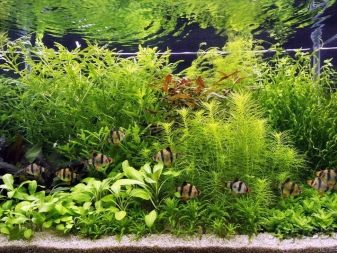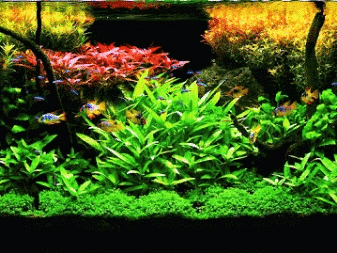Dutch aquarium: planting and care scheme

The Dutch Aquarium is a vivid example of the original and unconventional design of a home pond. Its filling destroys the usual ideas of how the aquarium world should look like. The centerpiece of a Dutch-style aquarium is not the underwater fauna, but a variety of plants. This article is about what a Dutch aquarium is and how to create it yourself.

What it is?
In fact, a Dutch aquarium is an artificially created underwater garden, consisting of different types of plants. Among them can be found both well-known varieties of algae and very expensive rare representatives of the aquarium flora.
It is noteworthy that this type of aquarium usually does not contain any aquatic life. If fish, turtles or other representatives of the aquarium fauna are nevertheless put into the tank, then in extremely limited quantities.
Despite the fact that the underwater gardens and flower beds in the Dutch style have a fairly natural look, the location of each plant is strictly determined from the beginning.
Not the least role in the harmony of the green composition is played by a well-thought-out scheme for planting plants, the development of which begins long before the actual arrangement of the aquarium.


So, the main steps in creating a Dutch aquarium are as follows:
- selection, purchase and preparation of an aquarium;
- preparation of a plan (scheme) for planting plants, selection of their assortment;
- organization of lighting;
- choice of soil;
- selection and installation of equipment;
- work with plants - composition, planting.



Choosing an aquarium
One of the most important and crucial steps on the path to creating a Dutch aquarium is choosing the right tank. Experts say that its volume should be not less than 200 liters... The best option is considered containers with a volume of about 500 liters.
Setting up a Dutch aquarium in a small container cannot be called an expedient and rational solution. A small tank with an underwater garden in the interior of the apartment will easily "get lost", and the plants will soon become cramped.
When choosing a container of suitable dimensions, it is easiest to focus on a simple criterion - the height of the tank should be about three times less than its width. In turn, the width of the container should be about 60 centimeters on average.

Planting plan preparation and selection
The plan (scheme) of planting aquatic plants is carried out on paper. In the course of work, one should take into account the proportions and dimensions of the container, the height and diameter of the plants, the features of the decor items.
You can define the main working points on the plan as follows:
- divide the area of the aquarium into 3 equal parts in height and width;
- mark 4 points in the middle of the container, formed as a result of intersection of vertical and horizontal lines.
The first pair of dots in the foreground are the places to look for when planting and placing short plants. Another pair of dots at the back of the aquarium, in turn, is a guide when placing tall or long climbing plants.

And also on the plan, you can mark the points where the main accents will be located. These can be plants with unusual colors, leaf shapes, or flowers that bloom under water. Such vegetation should be clearly visible when viewing the aquarium, therefore it is worth taking care in advance that nothing obstructs it.
The center of the tank is left empty. This allows you to provide the best view of the vegetation from all sides.
The range of plants for the Dutch aquarium is quite extensive. The following types can be cited as possible options:
- ferns;
- mosses (Javanese, riccardia, ricchia);
- cryptocoryne;
- water lilies;
- water kabomba;
- aponogeton;
- Cuban hornwort.



Lighting
Herbal aquariums require good and abundant light. The duration of daylight hours for aquatic plants should be at least 10-12 hours.
When there is a lack of light, additional lighting sources, LED supplementary lighting or reflectors are used.
Priming
It is allowed to use coarse-grained river sand or fine gravel with mild edges as a soil. Before laying it, it is recommended to pre-place a nutrient pad on the bottom... In the future, it will contribute to more active growth and development of plants.

Equipment
In order for the green inhabitants of the Dutch aquarium to feel good and develop fully, it is necessary to create comfortable living conditions for them. Not the least role here is played by special equipment that maintains the biological balance in the tank.
The technical equipment of the Dutch aquarium involves the installation of the following devices:
- filtration equipment;
- compressor;
- system of additional supply of carbon dioxide;
- a heater that maintains the temperature at + 25 ° C.

Working with plants
Planting tall plants is carried out along a line along the back wall of the tank. Low-rise specimens are placed in the foreground.
Combination of plants in large groups is allowed. This will make your underwater garden look as natural as possible.
In no case should one adhere to the symmetry and "mirror" arrangement of plants.Placing plantings in this way completely deprives the underwater garden of harmony, naturalness, natural naturalness.
Group plantings look very impressive, in which the plants contrast with each other.
These can be combinations of plants with burgundy and emerald foliage, with openwork and lamellar leaves, with short, straight and strongly curling shoots.



Additional design guidelines
Self-production of the underwater landscape of the Dutch aquarium also provides for the use of additional decorative elements. These can be stones, driftwood, artificial grottoes and caves, shells and corals. However, they cannot be used in large quantities, filling all the free space.
It should be borne in mind that decor items should match each other in style. So, plastic decor can look ridiculous and superfluous against the background of natural sea shells and corals.
When planning to launch fish into a prepared Dutch aquarium, you must familiarize yourself with their characteristics in advance. It is not recommended to keep fish prone to eating aquarium vegetation in the underwater garden. In addition, some species of fish have a habit of digging in the ground, digging it up at the roots of plants. These species cannot be kept in a Dutch aquarium.


It is not difficult to take care of the underwater garden, but it is important to carry out all the necessary procedures on a regular basis. So, weekly, you should replace 1/10 of the old water in the aquarium with fresh water. Debris accumulating on the bottom, dying and dead plant fragments must be removed in a timely manner. And also regularly you need to clean the walls of the tank from algae that grow during a long day of light.
The performance of the equipment should also be monitored. Filters need to be cleaned from blockages in a timely manner. Besides, it is important to monitor the functioning of the carbon dioxide supply system.
For more information on the Dutch aquarium, see the next video.








